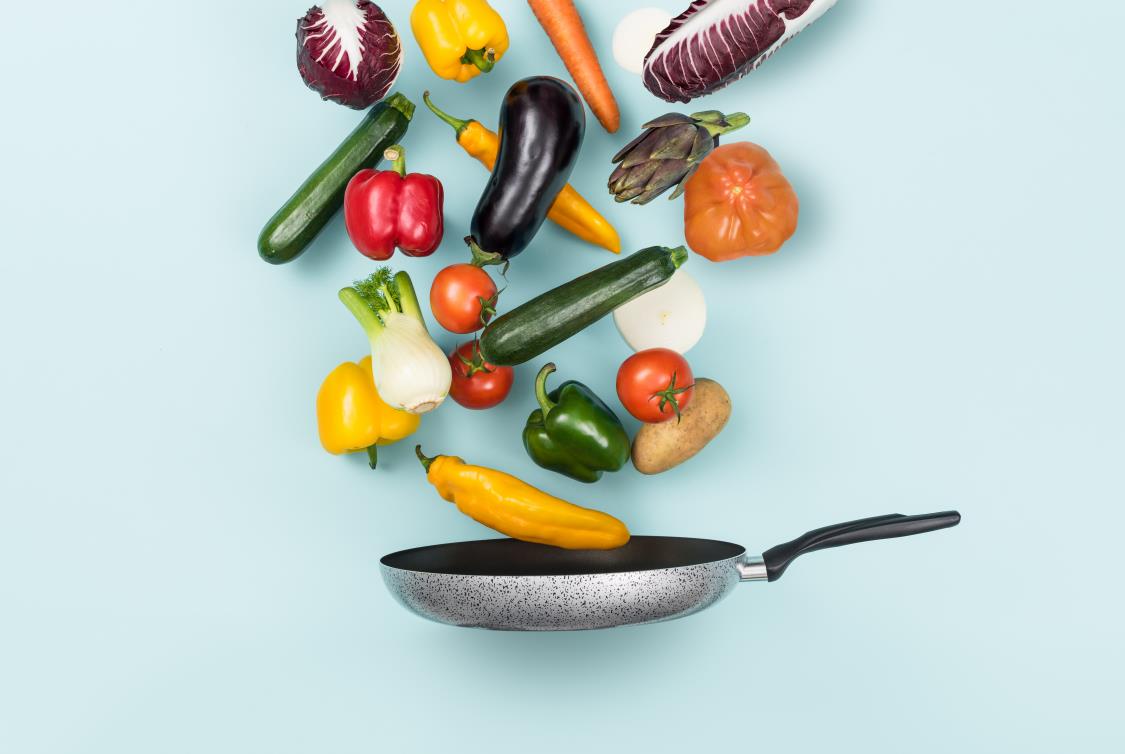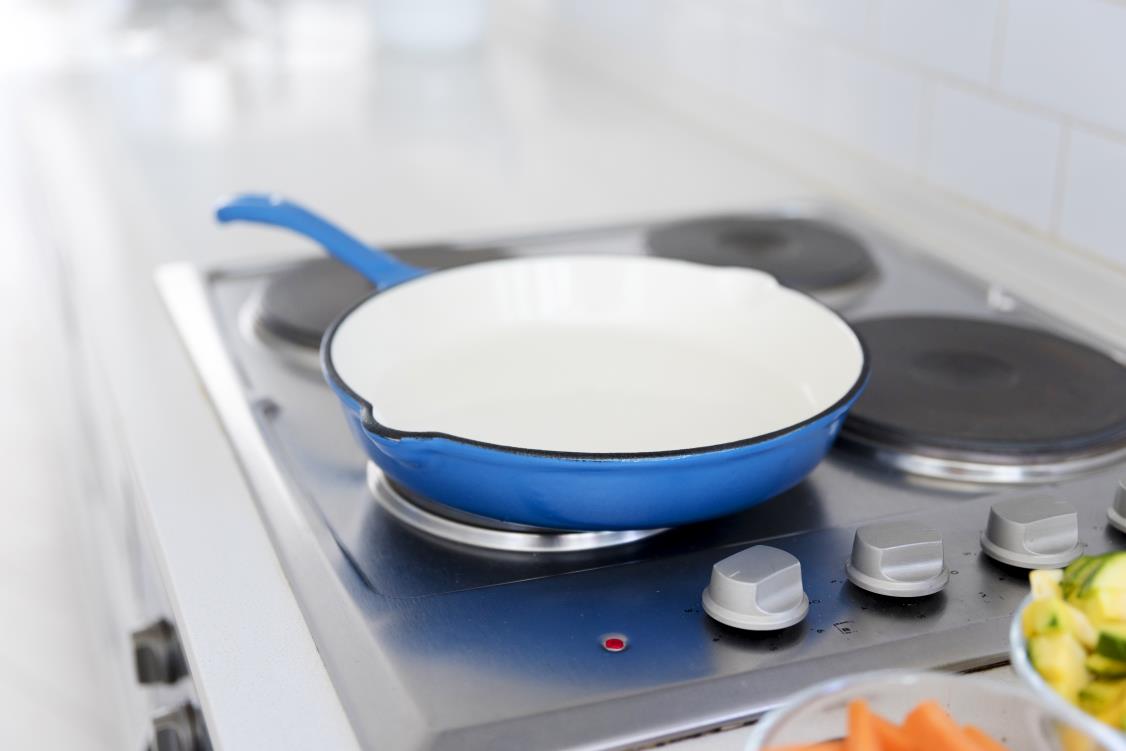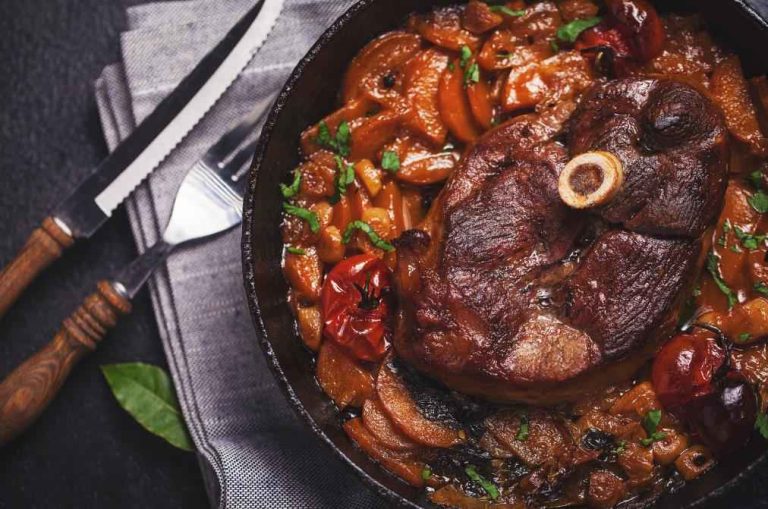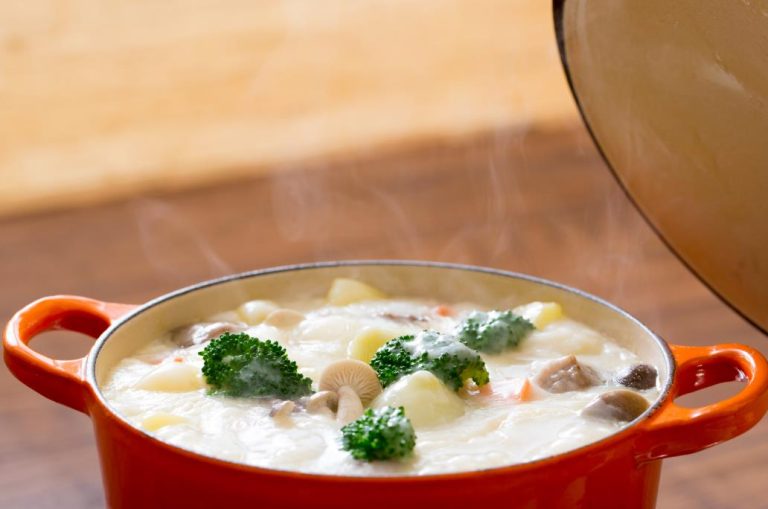Enameled cast iron Dutch ovens and pans are a prized possession of cooks that love the cast iron’s properties but dislike the seasoning process. They provide a non-reactive cooking surface with their vitreous coating that needs minimal upkeep.
Unlike plain cast iron, the worries of raw iron reacting and seasoning stripping after a dash of tomato sauce or a squeeze of fresh lemon are non-existent with enameled cast iron cookware. It owes this to the non-porous coating that provides it with non-stick attributes.
However, enameled cast iron is not inherently non-stick. Depending on what non-stick means to your customers, enameled cast iron’s cooking surface may not meet expectations.
In this article, we’ll provide a thorough guide on enameled cast iron cookware’s non-stick capabilities.
What is enameled cast iron?
Enameled cast iron and plain cast iron look very different on the surface. On the inside, enameled cast iron is the same as any other plain cast iron cookware.
Enameled cast iron, as the name suggests, is a version of cast iron with a coat of enamel. The coating seals the iron, preventing it from reacting with the environment, all while offering cast iron’s superb heat retention capabilities. Covering the raw iron also means it no longer needs seasoning.
The enamel coating is essentially glass. It’s fused onto the metal at extremely high temperatures. Although similar, enamel coating is unlike ceramic. It won’t fade away or lose its effectiveness with use but is susceptible to chipping.
The enamel coat is very delicate compared to the sturdy cast iron surface. That’s why handling enameled cast iron cookware vigorously and stirring foods with metal utensils is never a good idea.
Buy Wholesale Cookware and Start Scaling up with Us Today
Contact us and connect with a sales rep to get a free quote.
How non-stick is enameled cast iron?
Enameled cast iron will stick to food if you toss food on the surface without oil or water. Teflon and ceramic pans may brown chicken and not stick without a greased surface but enameled cast iron will. This is because it doesn’t have the chemicals non-stick cookware uses.
Enameled cast iron pans and pots need a greased cooking surface to prevent sticking. Luckily, even a tiny layer is enough to prevent enameled cast iron cookware from sticking. This makes enameled cast iron cookware as convenient as any other non-stick pan. It also enables a healthier lifestyle with reduced unhealthy fats in the diet.
The non-stick properties of enameled cast iron cookware are similar to stainless steel. It isn’t inherently non-stick but can be with a little bit of technique. Fortunately, the process of making enameled cast iron non-stick is straightforward. A tiny drop of cooking oil is all it takes to create a non-stick cooking surface.
Other non-stick cookware materials

The enamel coating isn’t the only material that provides a non-stick cooking surface. There are others (ceramic and PTFE coatings) that can be just as good, depending on preferences.
- PTFE: Short for Polytetrafluoroethylene, PTFE is widely recognized by the brand name Teflon. This non-stick coating material is one of the most effective ones. However, PTFE or Teflon has a good reputation among cooks. When heated at high temperatures, PTFE may release harmful chemicals such as perfluorooctanoic acid, PFOA. It’s essential for shops to sell Teflon pans and pots that don’t contain PFOA to ensure safety standards.
- Ceramic: Ceramic non-stick coatings are equally good as PTFE but without health concerns. Before you think of clay, note that the ceramic coating that supplies pans and pots with a non-stick cooking surface isn’t entirely ceramic. These coatings use silicon or fluoropolymer-based materials that mimic the appearance of ceramic. Nonetheless, this type of non-stick cookware is safer than Teflon, with better heat, wear, and tear resistance.
Enameled cast iron vs. non-stick cookware
Enameled cast iron can be similar in appearance, especially to non-stick ceramic cookware. However, the cooking experience is vastly different using enameled cast iron and ceramic or PTFE non-stick cookware.
Enameled cast iron upholds many attributes of plain cast iron skillets. It takes a while to heat, holds a hot surface for a long time, and is heavy to move around. At the same time, enameled cast iron also has similar properties to non-stick cookware. It doesn’t corrode, requires seasoning, and foods don’t stick.
In a way, these properties make enameled cast iron right between a typical cast iron skillet and a non-stick pan.
When compared, enameled cast iron stands out with resistance to high heat unbearable for non-stick, compatibility with all heat sources, and excellent retention of heat.
Perhaps these advantages of enameled cast iron outweigh the possible downsides. Yet, non-stick cookware takes less time to heat, requires little to no oil, and lasts longer in robust kitchens. If enameled cast iron care is overlooked, it can chip or crack. This would either require repair or a new piece of cookware.
What kind of cookware should you sell?
There is no best cookware material that fits every cook’s preference. As such, we can’t say enameled cast iron is better than non-stick for all your customers or vice versa.
While one cook might need heat retention for slow cooking, another may want an easy-to-clean skillet to scramble a few eggs. As with other kitchen products, consumers have varying preferences that alter the picture of a perfect buy.

Enameled cast iron’s heat retention, partially non-stick cooking surface, and abundance of colors are attractive to many. So are non-stick’s lightweight construction, affordable pricing, and convenient cooking surface.
Choosing between the two comes down to individual preferences. All the considerations above appeal to a large portion of cookware buyers.
Considering the attraction, most stores are better off having a small selection of both enameled cast iron and non-stick. For stores with a limited budget, non-stick cookware, especially those with ceramic coatings, is a more sensible pick with its affordable pricing.
Frequently Asked Questions
Source cookware through LeeKnives
We are a manufacturer of kitchen knives in Yangjiang City, China. Although our facilities don’t produce cookware, we can pair you with the best cookware manufacturers in the region.
Our extensive connections with cookware manufacturers in the Guangdong province can help your business scale up. Contact us to request a quote for all cookware acquisition inquiries.







